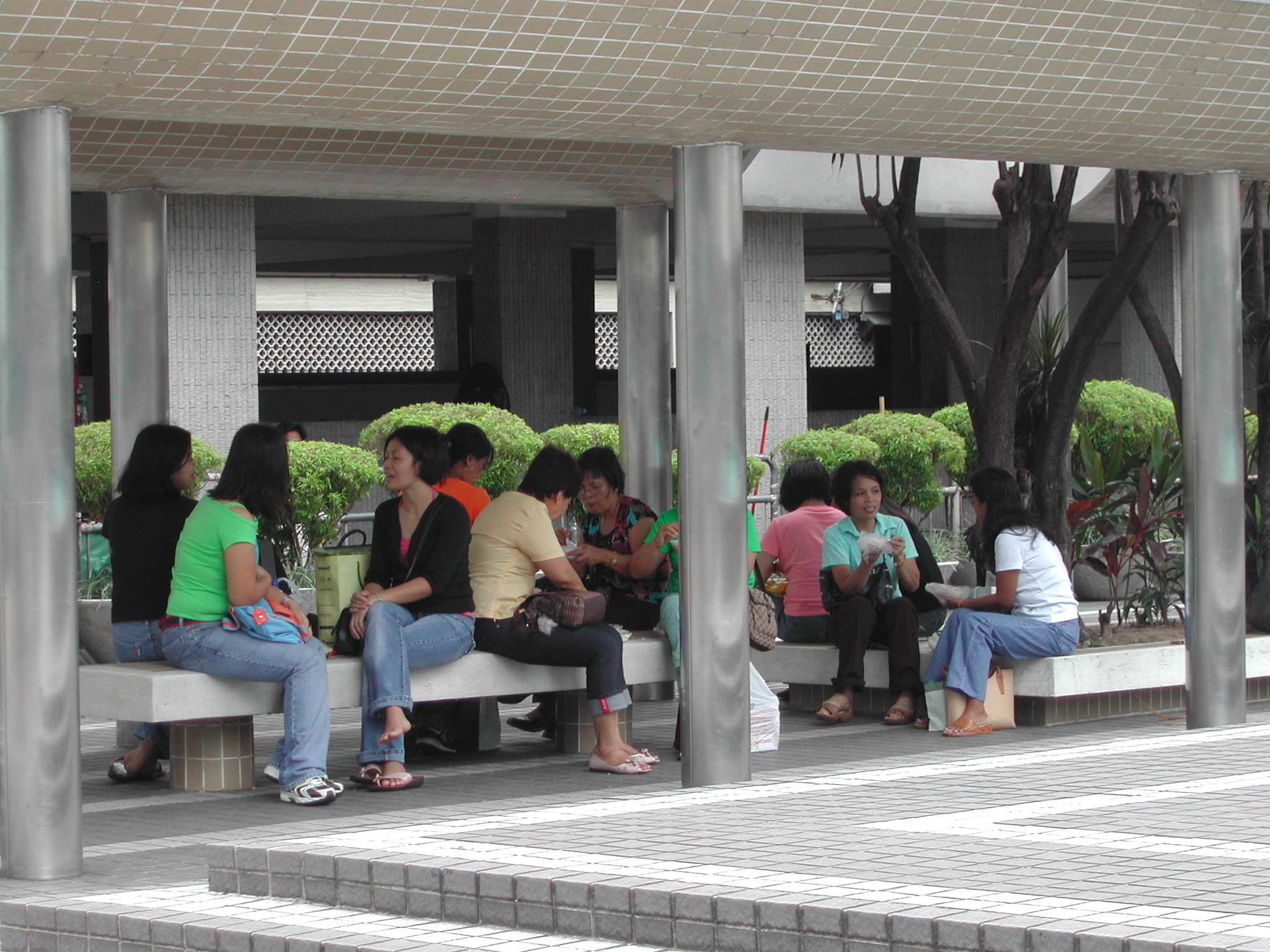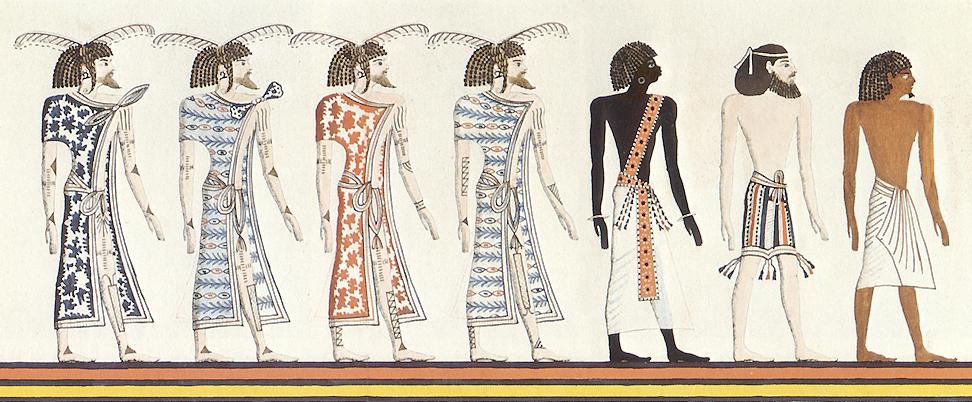|
Intersectional Feminism
Intersectionality is an analytical framework for understanding how groups' and individuals' social and political identities result in unique combinations of discrimination and privilege. Examples of these intersecting and overlapping factors include gender, caste, sex, race, ethnicity, class, sexuality, religion, disability, physical appearance, and age. These factors can lead to both empowerment and oppression. Intersectionality arose in reaction to both white feminism and the then male-dominated black liberation movement, citing the "interlocking oppressions" of racism, sexism and heteronormativity. It broadens the scope of the first and second waves of feminism, which largely focused on the experiences of women who were white, cisgender, and middle-class, to include the different experiences of women of color, poor women, immigrant women, and other groups, and aims to separate itself from white feminism by acknowledging women's differing experiences and identiti ... [...More Info...] [...Related Items...] OR: [Wikipedia] [Google] [Baidu] |
White Feminism
White feminism is a term which is used to describe expressions of feminism which are perceived as focusing on white women while failing to address the existence of distinct forms of oppression faced by ethnic minority women and women lacking other privileges. Whiteness is crucial in structuring the lived experiences of white women across a variety of contexts. The term has been used to label and criticize theories that are perceived as focusing solely on gender-based inequality. Primarily used as a derogatory label, "white feminism" is typically used to reproach a perceived failure to acknowledge and integrate the intersection of other identity attributes into a broader movement which struggles for equality on more than one front. In white feminism, the oppression of women is analyzed through a single-axis framework, consequently erasing the identity and experiences of ethnic minority women in the space. The term has also been used to refer to feminist theories perceived to focus ... [...More Info...] [...Related Items...] OR: [Wikipedia] [Google] [Baidu] |
Immigrant Women
Almost half of international migrants are women, generally travelling as either migrant workers or refugees. Women migrant workers migrate from developing countries to high-income countries to engage in paid employment, typically in gendered professions such as domestic work. Because their work disproportionately takes place in private homes, they are vulnerable to exploitation and abuse. Wages earned are largely sent home to the originating country to support the cost of living of the family left behind. Refugee women face multiple challenges including limited access to healthcare, discrimination, sexual violence, and risks of human trafficking. Mental and physical health are often affected as a result. International migration Almost half of international migrants are women, which is one of the most significant migrant-pattern changes in the last half century. Women migrate alone or with their family members and community. Even though female migration is largely viewed as assoc ... [...More Info...] [...Related Items...] OR: [Wikipedia] [Google] [Baidu] |
Poverty And Gender
Gender inequality is the social phenomenon in which people are not treated equally on the basis of gender. This inequality can be caused by gender discrimination or sexism. The treatment may arise from distinctions regarding biology, psychology, or cultural norms prevalent in the society. Some of these distinctions are empirically grounded, while others appear to be social constructs. While current policies around the world cause inequality among individuals, it is women who are most affected. Gender inequality weakens women in many areas such as health, education, and business life. Studies show the different experiences of genders across many domains including education, life expectancy, personality, interests, family life, careers, and political affiliation. Gender inequality is experienced differently across different cultures. Sex differences Biology Natural differences exist between the sexes based on biological and anatomic factors, mostly differing reproductive roles. ... [...More Info...] [...Related Items...] OR: [Wikipedia] [Google] [Baidu] |
Women Of Color
The term "person of color" (: people of color or persons of color; abbreviated POC) is used to describe any person who is not considered "white". In its current meaning, the term originated in, and is associated with, the United States. From the 2010s, however, it has been adopted elsewhere in the Anglosphere (often as person of colour), including relatively limited usage in the United Kingdom, Canada, Australia, Ireland, and South Africa. In the United States, the term is involved in the various definitions of non-whiteness, including African Americans, Asian Americans, Native Americans, Pacific Islander Americans, multiracial Americans, and some Latino Americans, though members of these communities may prefer to view themselves through their cultural identities rather than color-related terminology. The term, as used in the United States, emphasizes common experiences of systemic racism, which some communities have faced. The term may also be used with other collective categ ... [...More Info...] [...Related Items...] OR: [Wikipedia] [Google] [Baidu] |
Middle Class
The middle class refers to a class of people in the middle of a social hierarchy, often defined by occupation, income, education, or social status. The term has historically been associated with modernity, capitalism and political debate. Common definitions for the middle class range from the middle fifth of individuals on a nation's income ladder, to everyone but the poorest and wealthiest 20%. Theories like "Paradox of Interest" use decile groups and wealth distribution data to determine the size and wealth share of the middle class. Terminology differs in the United States, where the term ''middle class'' describes people who in other countries would be described as working class. There has been significant global middle-class growth over time. In February 2009, ''The Economist'' asserted that over half of the world's population belonged to the middle class, as a result of rapid growth in emerging countries. It characterized the middle class as having a reasonable amo ... [...More Info...] [...Related Items...] OR: [Wikipedia] [Google] [Baidu] |
Cisgender
The word ''cisgender'' (often shortened to ''cis''; sometimes ''cissexual'') describes a person whose gender identity corresponds to their sex assigned at birth, i.e., someone who is not ''transgender''. The prefix '' cis-'' is Latin and means ''on this side of''. The term ''cisgender'' was coined in 1994 as an antonym to ''transgender'', and entered into dictionaries starting in 2015 as a result of changes in social discourse about gender. Related concepts are cisnormativity (the presumption that cisgender identity is preferred or normal) and cissexism (bias or prejudice favoring cisgender people). Etymology The term ''cisgender'' has its origin in the Latin-derived prefix '' cis-'', meaning 'on this side of', which is the opposite of '' trans-'', meaning 'across from' or 'on the other side of'. This usage can be seen in the ''cis''–''trans'' distinction in chemistry, the cis and trans sides of the Golgi apparatus in cellular biology, the ancient Roman term ' ... [...More Info...] [...Related Items...] OR: [Wikipedia] [Google] [Baidu] |
White Women
White is a racial classification of people generally used for those of predominantly European ancestry. It is also a skin color specifier, although the definition can vary depending on context, nationality, ethnicity and point of view. Description of populations as "White" in reference to their skin color is occasionally found in Greco-Roman ethnography and other ancient or medieval sources, but these societies did not have any notion of a White race or pan-European identity. The term "White race" or "White people", defined by their light skin among other physical characteristics, entered the major European languages in the later seventeenth century, when the concept of a "unified White" achieved greater acceptance in Europe, in the context of racialized slavery and social status in the European colonies. Scholarship on race distinguishes the modern concept from pre-modern descriptions, which focused on physical complexion rather than the idea of race. Prior to the moder ... [...More Info...] [...Related Items...] OR: [Wikipedia] [Google] [Baidu] |
Waves Of Feminism
The history of feminism comprises the narratives (chronological or thematic) of the movements and ideologies which have aimed at equal rights for women. While feminists around the world have differed in causes, goals, and intentions depending on time, culture, and country, most Western feminist historians assert that all movements that work to obtain women's rights should be considered feminist movements, even when they did not (or do not) apply the term to themselves. Some other historians limit the term "feminist" to the modern feminist movement and its progeny, and use the label "protofeminist" to describe earlier movements. Modern Western feminist history is conventionally split into time periods, or "waves", each with slightly different aims based on prior progress: * First-wave feminism of the 19th and early 20th centuries focused on overturning legal inequalities, particularly addressing issues of women's suffrage * Second-wave feminism (1960s–1980s) broadened debat ... [...More Info...] [...Related Items...] OR: [Wikipedia] [Google] [Baidu] |
Second-wave Feminism
Second-wave feminism was a period of feminist activity that began in the early 1960s and lasted roughly two decades, ending with the feminist sex wars in the early 1980s and being replaced by third-wave feminism in the early 1990s. It occurred throughout the Western world and aimed to increase women's equality by building on the feminist gains of the late 19th and early 20th centuries. Second-wave feminism built on first-wave feminism and broadened the scope of debate to include a wider range of issues: sexuality, family, domesticity, the workplace, reproductive rights, ''de facto'' inequalities, and official legal inequalities. First-wave feminism typically advocated for formal equality and second-wave feminism advocated for substantive equality. It was a movement focused on critiquing patriarchal or male-dominated institutions and cultural practices throughout society. Second-wave feminism also brought attention to issues of domestic violence and marital rape, created ... [...More Info...] [...Related Items...] OR: [Wikipedia] [Google] [Baidu] |
First-wave Feminism
First-wave feminism was a period of feminist activity and thought that occurred during the 19th and early 20th century throughout the Western world. It focused on De jure, legal issues, primarily on securing women's right to vote. The term is often used synonymously with the kind of feminism espoused by the liberal feminism, liberal women's rights movement with roots in the first wave, with organizations such as the International Alliance of Women and its affiliates. This feminist movement still focuses on equality from a mainly legal perspective. The term ''first-wave feminism'' itself was coined by journalist Martha Lear in a ''New York Times Magazine'' article in March 1968, "The second-wave feminism, Second Feminist Wave: What do these women want?" First- wave feminism is characterized as focusing on the fight for women's political power, as opposed to ''de facto'' unofficial inequalities. The first wave of feminism generally advocated for Equal opportunity#Formal equality of ... [...More Info...] [...Related Items...] OR: [Wikipedia] [Google] [Baidu] |
Heteronormativity
Heteronormativity is the definition of heterosexuality as the normative human sexuality. It assumes the gender binary (i.e., that there are only two distinct, opposite genders) and that sexual and marital relations are most fitting between people of the opposite sex. Heteronormativity creates and upholds a social hierarchy based on sexual orientation with the practice and belief that heterosexuality is deemed as the societal norm. A heteronormative view, therefore, involves alignment of biological sex, sexuality, gender identity and gender roles. Heteronormativity has been linked to heterosexism and homophobia, and the effects of societal heteronormativity on lesbian, gay and bisexual individuals have been described as heterosexual or "straight" privilege. Etymology Michael Warner popularized the term in 1991, in one of the first major works of queer theory. The concept's roots are in Gayle Rubin's notion of the "sex/gender system" and Adrienne Rich's notion of compul ... [...More Info...] [...Related Items...] OR: [Wikipedia] [Google] [Baidu] |







